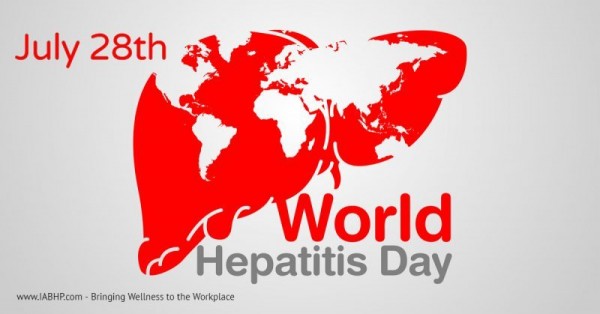Statement from the National Association of County and City Health Officials on World Hepatitis Day
July 28, 2020
The National Association of County and City Health Officials (NACCHO), on behalf of the nearly 3,000 local health departments across the country, recognizes World Hepatitis Day, acknowledging the magnitude and impact of viral hepatitis, which causes significant illness and kills more Americans than any other infectious disease. Local health departments are leaders in the fight against viral hepatitis, engaged in surveillance, prevention, diagnosis, and treatment of viral hepatitis.
Tools to eliminate viral hepatitis in the United States include highly-effective vaccines against hepatitis A (HAV) and B (HBV); harm reduction strategies that could prevent half of hepatitis C cases (HCV); and curative treatments for HCV that can prevent deaths and further transmission. However, social and structural barriers to viral hepatitis services are driving a dramatic rise in HCV and widespread outbreaks of HAV. Moreover, additional investments are needed to scale up services and address the root causes of hepatitis and the inequities that define its distribution and impact in the U.S.
“While the nation is focused on addressing the COVID-19 pandemic, the spread of viral hepatitis continues,” said Lori Tremmel Freeman, NACCHO’s Chief Executive Officer. “We have the tools to eliminate viral hepatitis in the U.S., but social and structural barriers, stigma and discrimination, and insufficient funding limit access to prevention, diagnosis, and care. We need to redouble our efforts to support the work of local health departments to continue their work to prevent the spread and cure those infected.”
In 2017, the National Academies of Science, Engineering, and Medicine released a groundbreaking report declaring the feasibility of hepatitis elimination in the U.S., laying out a plan for the elimination of HBV and HCV. However, since then, cases have continued to rise. More than 30 states have reported outbreaks of HAV since 2016, and injection drug use has advanced the spread of HBV and HCV, resulting in a four-fold increase in HCV cases and state-level increases in HBV in the states hit hardest by the opioid epidemic.
Despite the availability of highly effective vaccines against HAV and HBV, vaccine coverage remains low: less than 10% of adults are vaccinated against HAV and only 25% of adult are vaccinated against HBV in the U.S. Half of people living with HCV and two-thirds of those
living with HBV don’t know their status, demonstrating the need for routine testing. While HCV can now be cured with limited side effects in less than three months, many people are unable to access this costly treatment. Putting the U.S. on a path toward hepatitis elimination would cost $3.9 billion over 10 years—an investment which would save the U.S. $6.5 billion annually. And yet, the Centers for Disease Control and Prevention receives less than 10% of what it needs to fund its work against viral hepatitis, a trend that is mirrored at the local level
These gaps in prevention, testing, and care are driven by social and structural barriers that limit access to viral hepatitis services: people who use drugs, people experiencing unstable housing or homelessness, people who are currently or were recently incarcerated, and men who have sex with men are all disproportionately affected by viral hepatitis in the U.S. These populations also face heightened stigma, discrimination, and other barriers when seeking healthcare.
While syringe services programs can prevent half of new HCV cases, many jurisdictions ban such programs, based on incorrect assumptions about their safety and efficacy. Even in those places with established programs, pandemic-related social distancing procedures and resources constraints also pose unique challenges to these important programs. People experiencing unstable housing or homelessness report substantial unmet health needs and may not be able to consistently utilize sanitation and hygiene practices that could protect them from HAV. The prevalence of HCV in U.S. prisons ranges from 10 to 40%, compared to a national prevalence of 1%. This drives community spread, with HCV prevalence 10-20 times higher in communities near correctional facilities. Yet the criminal justice system fails to provide viral hepatitis services—with less than 1% of HCV-positive inmates accessing treatment in state prisons —and the stigma associated with a criminal record impedes access to employment, and in turn health insurance.
For more information about NACCHO’s infectious disease program initiatives, visit its HIV, STI, and Viral Hepatitis webpage.



